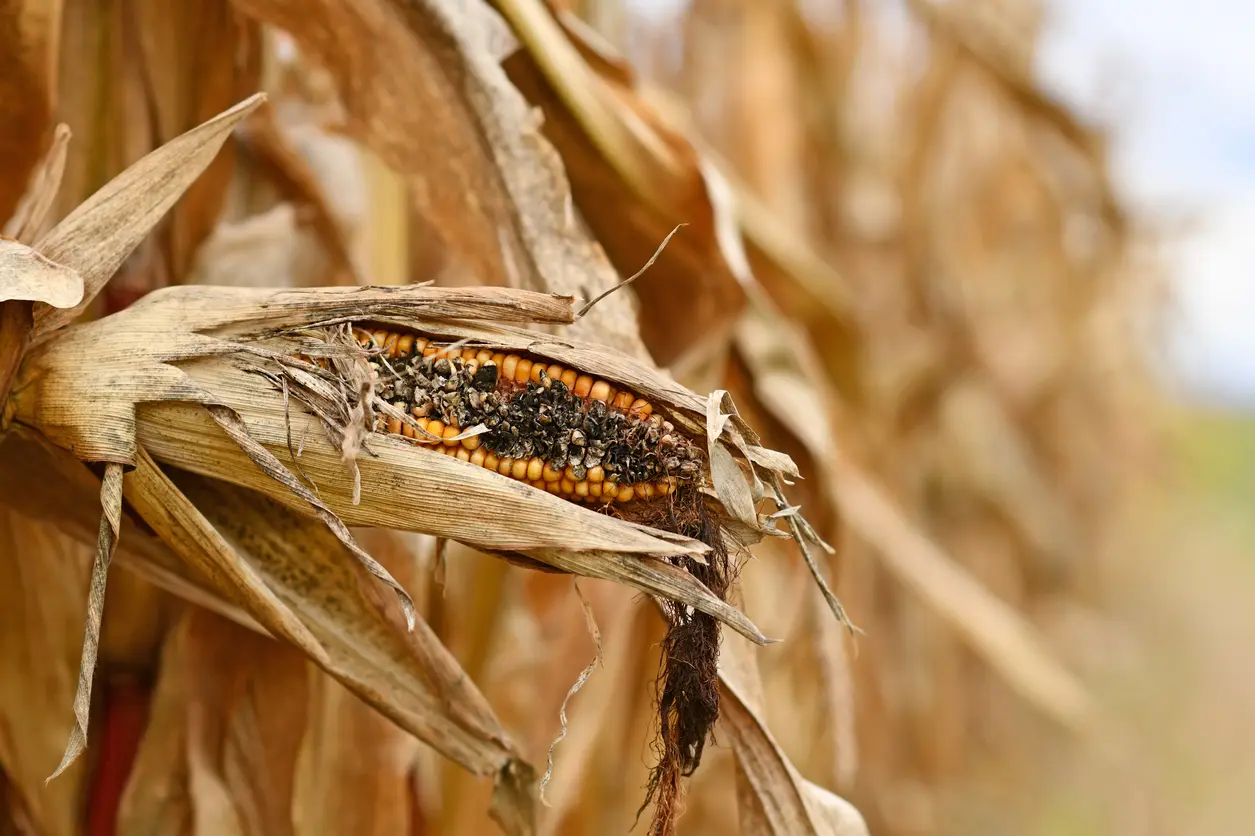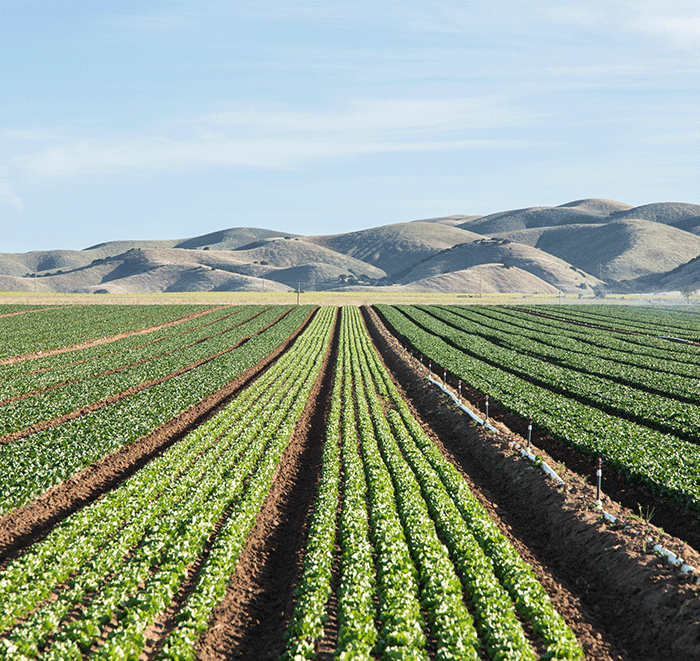
Six Common Stalk Rots
1. Anthracnose Stalk Rot
-
- Description: Large, dark brown to shiny black areas of streaks. It’s the only major stalk rot that is airborne, not soilborne. Top dieback precedes stalk lodging. Upper two or three leaves may turn yellow or reddish and drop off.
- Location: Corn following corn and surface residue remains, such as in minimum till and no-till.
- Timing: Late season under wet, humid and warm conditions.
2. Gibberella Stalk Rot
-
- Description: Leaves on infected plants turn dull grayish-green; lower internodes soften and turn tan to dark brown
- identified by pinkish-red color in pith tissues.
- Location: More common in central to northern Corn Belt.
- Timing: Late season under cool, wet conditions. Severe plant stresses increase likelihood of Gibberella.
3. Diplodia Stalk Rot
-
- Description: Leaves wilt, become dry and appear grayish-green, resembling frost damage. Small, pinpoint black
- specks appear around the nodes, which are brown and spongy. Affected plants die suddenly.
- Location: More common in continuous corn and reduced tillage.
- Timing: Dry early-season conditions and warm, wet weather two to three weeks after silking. High N, low K, high
- populations, and leaf loss through disease, hail or insect damage make plants more susceptible.
4. Charcoal Stalk Rot
-
- Description: Black specks on vascular strands and a charred appearance on the interior of stalks denote charcoal stalk rot.
- Timing: Hot, dry weather conditions increase the chance of charcoal stalk rot.
5. Pythium Stalk Rot
-
- Description: Usually confined to a single internode just above the soil line. Diseased stalks will appear brown, water
- soaked and soft.
- Timing: Can develop during extended hot, wet or very humid weather. Usually becomes evident shortly before or after tasseling. It’s the only stalk rot to attack plants prior to pollination.
6. Fusarium Stalk Rot
-
- Description: Similar to Gibberella and generally less common. Rotting affects roots, plant base and lower internodes.
- Whitish-pink to salmon discoloration in pith.
- Timing: Dry early-season conditions and warm, wet weather 2 to 3 weeks after silking favor the disease. High N, low K (and generally, fertility imbalances), excess plant population, and leaf loss through disease, hail or insect damage make plants more susceptible.
Late-Season Soybean Diseases
Soybean diseases such as sudden death syndrome (SDS), brown stem rot (BSR), charcoal rot, Rhizoctonia stem rot and Phytophthora root rot are all soybean diseases, which can cause early senescence. From a distance, the symptoms of yellow or chlorotic soybeans appear similar in the field. The first symptoms to appear are yellow or chlorotic areas in-between the leaf veins that turn tan to brown. Eventually, plants will defoliate early leaving stems, petioles and pods. Determining which pathogen is responsible can be a challenge.
Here are some key characteristics to look for to determine which disease may be causing the problem:
-
-
- Sudden death syndrome is caused by Fusarium solani f. sp. glycinea. The tap root is very discolored and there are few, if any, secondary roots. A blue stain may be present on the root. The pith is white. As leaves drop, petioles will remain attached to the plant.
- Brown stem rot foliar symptoms are similar to sudden death syndrome, but the tap root is not discolored. When stems are split, the pith is intact but chocolate brown in color. Leaves will wither and stay on plants.
- Charcoal rot is associated with high soil temperatures. Light gray or silverish lesions first develop on the tap root. Microsclerotia will form under the epidermis of the stem tissues, giving it a grayish black color resembling a “sprinkling of finely powdered charcoal”.
- Rhizoctonia stem canker will have a brick-red sunken lesion at the base of the stem.
-
Phytophthora stem rot symptoms include a dark brown discoloration of the stem progressing up from ground level. Internally, the stem pith will be discolored.
Dr. John W. McNamara, Agronomist

